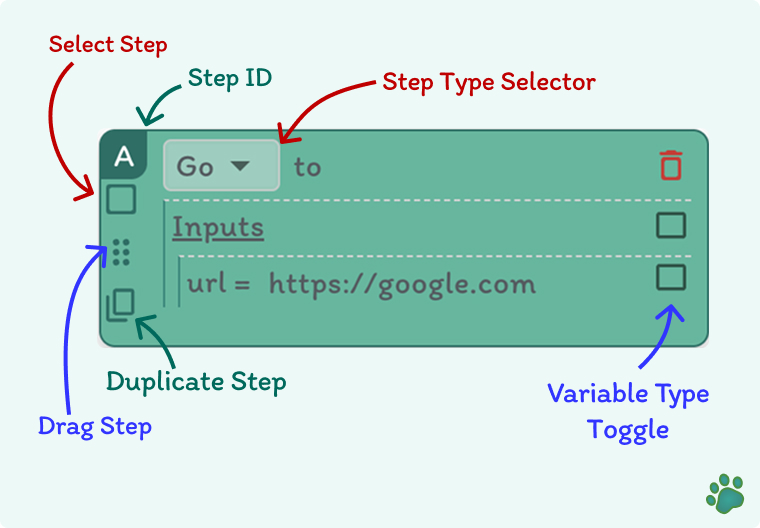Overview
Steps are the fundamental building blocks of automation in Snappit. Each step represents a single, logical action within a workflow—like clicking a button, typing text, uploading a file, or making an HTTP request.
Snappit workflows are composed by chaining together these steps in a specific order to automate complex browser-based tasks.
🧠 What is a Step?
A Step is an individual unit of execution in your automation workflow. Each step is designed to do one task—clear, modular, and traceable.
Steps include the following UI features to help with management and organization:

- Step ID – A unique identifier for each step used in variable referencing.
- Select Step – Allows multi-selection for bulk actions like grouping or deletion.
- Drag Step – Reorder steps easily via drag and drop.
- Duplicate Step – Clone an existing step to reuse similar logic.
- Delete Step – Remove steps that are no longer needed.
🧰 Workflow Design Flexibility
With steps, you can:
- Build logic in a clear, modular fashion.
- Organize steps visually using Block steps.
- Introduce dynamic behavior with Input, Parse, or Workflow steps.
- Integrate with external systems using HTTP, Upload, and more.
Steps are designed to be composable and reusable—helping you scale your automation with confidence.
Whether you're building a simple login automation or a complex data extraction pipeline, steps provide the structure and precision to get the job done.